How to paint wallpaper for painting: tips and tricks
When completing repairs, where wallpaper for painting is correctly pasted on a well-prepared surface, it is important to bring the walls and ceiling to perfection. The overall impression of the design of a residential or office space will depend on the correspondence of the type of wallpaper to the type of paint and the method of its application. But it is important not only to know what kind of paint the wallpaper is painted for painting, but also to complete this stage in compliance with all the subtleties of the technology.
What is the difference between the base for painting and conventional roll materials?
The modern market offers a huge selection of finishing materials for exterior and interior decoration. The color and pattern of the rolls has not been decisive for a long time, since it can be varied by adding any pigment to the coloring base. Wallpaper for painting is the easiest way to transform the interior, thanks to repeated repainting of the same surface.
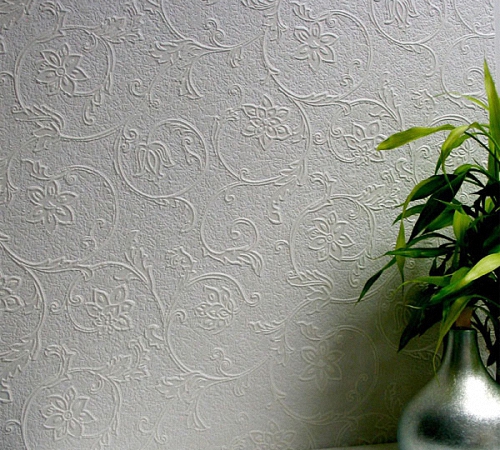
Many are interested in how many times to paint wallpaper for painting? It is difficult to give an answer without seeing the glued surface. Glass fiber is the most durable - without loss of texture, they are repainted up to 20 times. This is especially true for large drawings and convex relief. Paper wallpapers for painting more than 4-5 stains are not used, they are generally not intended for multiple color changes. But the main difference between wallpaper for painting is that they are designed specifically for repeated painting of the surface.
Sometimes they try to paint thick vinyl wallpaper glued to the surface with the addition of PVA glue. However, this is a risky undertaking, even if it turns out well. Such experiments are possible only when you urgently need to paint over some defects or children's drawings on the wallpaper. If it does not work out well, you will have to remove the wallpaper and do a full repair. But there is no such risk if you immediately abandon the usual wallpaper in favor of rolled materials for painting. Although their cost is higher than ordinary paper wallpaper, it is not necessary to change the base during the next repair.
Wallpapers for painting have a more noble appearance, but, given their durability, you should immediately decide for yourself which texture you like best:
- smooth;
- with a small pattern;
- with a large pattern;
- with an effective structure.
Tip: If you do not know which wallpaper to choose for painting, how to glue and paint, do not refuse them. Paper rolls will soon lose their relevance, because they will be replaced by more practical ones - for repeated dyeing.
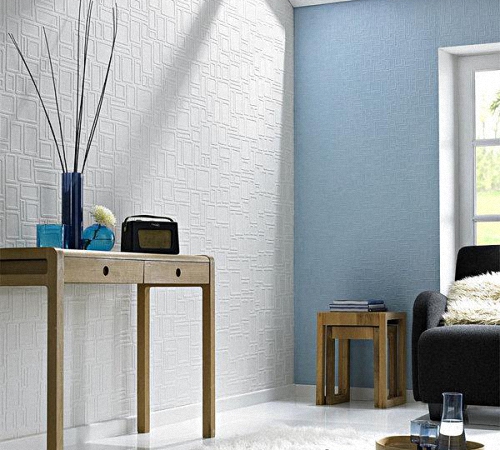
The base has different technical characteristics, it is classified depending on the base material and the volumetric surface for wall painting:
- fiberglass;
- interlining;
- vinyl;
- thick impregnated paper;
- linkrusta (volumetric relief is applied with a special mixture based on wood flour, chalk and wax).
The roll base for painting will last at least 15 - 20 years, especially with careful care. It is advisable to make the first tone as light as possible, since the wallpaper, even after applying the coloring composition, is a little translucent. The wallpaper itself is light - colorless, white or translucent, but there is a color base. The shade of paint is better to choose a tone darker than the base.
It is not recommended to wash ordinary wallpaper. If you are interested in whether it is possible to paint wallpaper not for painting, then experts advise doing it carefully, only rolls with a protective coating. The advantage of the base for painting is that it can be washed and repainted, which is especially important in the children's room and on surfaces that often get dirty. Not any paint is suitable for this, but only a special base for painting wallpaper. Interlining cannot be painted with heavy paint or based on aggressive solvents - it will spoil the three-dimensional pattern.
Attention: Wallpaper for painting can also be made multi-colored, for this, vinyl rolls are impregnated from the inside with one color, and after pasting, the three-dimensional pattern is painted over with a sponge. But with this method it is better not to experiment on the walls without prior experience.
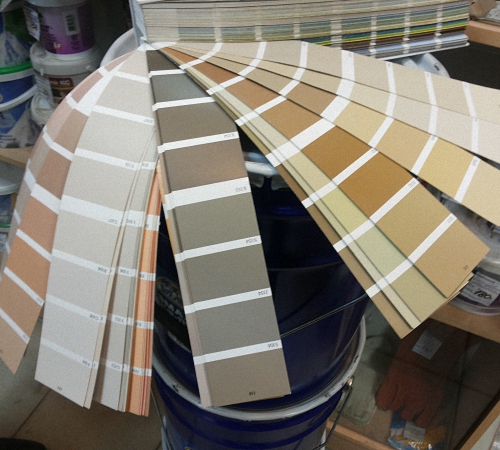
How to calculate paint consumption for wallpaper?
In order to deal with wallpaper painting without fear that there may not be enough paint, the correct consumption is important, which is calculated based on:
- the total area of the painted surface;
- paint consumption per 1 sq.m.;
- the ability of the substrate to absorb paint.
The painting area is the sum of all the perimeters of the walls plus the ceiling, if it is supposed to be painted as well. The perimeter is the length multiplied by the width, the resulting value is the area of the painted surfaces. But from these indicators, the dimensions of window and door openings are subtracted, before painting the wallpaper for painting, they add a little margin for an unforeseen case - overspending, the paint is strongly absorbed, etc.
Paint consumption per 1 sq.m. indicated in the manufacturer's instructions or on the packaging. The same type of paint will differ from manufacturer in consistency (density), respectively, will be absorbed and consumed differently. Standard consumption does not exceed 180 g/sq.m in 1 layer and up to 250 g/sq.m. in 2 layers. At the same time, each material absorbs paint in its own way - paper and interlining absorb it much more than fiberglass or vinyl.
Look at the units of measurement, as they also indicate 1 kg / sq.m. and 1 ml/sq.m. The standard density of wallpaper paint weighs about 1.5 kg, that is, one and a half rads heavier than 1 liter of water. If the wallpaper has already been pasted, but the paint has not yet been purchased, it is not necessary to hurry with this - you can not paint the wallpaper for painting for a while, nothing will happen to them. But painting is also an additional surface protection against contamination.
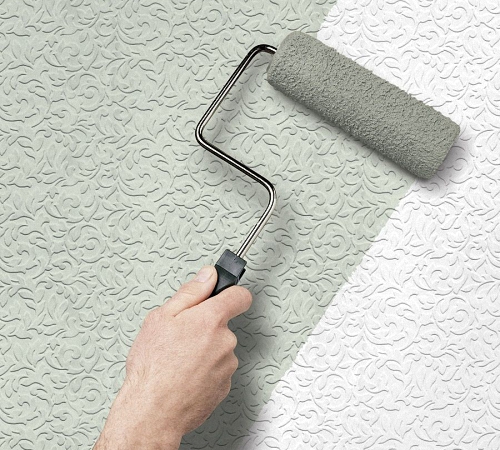
How to choose the right paint and prepare for painting?
When choosing and buying wallpaper paints, various factors are taken into account, including the base material and the functionality of the room.
Each type of base involves its own type of paint:
- for paper rolls - water-based;
- for painting interlining - water-dispersion;
- for fiberglass - acrylic or latex;
- linkrusta - liquid oil, acrylic and wax paste.
1. For washable surfaces (bathroom and kitchen), acrylic and latex paints are preferable. They form a film, “breathe” worse, but are not afraid of exposure to steam and gentle cleaning.
2. In open areas and in sunlight, latex paints are used that do not fade under direct rays.
3. Each paint has its own light reflectance:
- matte;
- glossy;
- satin;
- semi-matt.
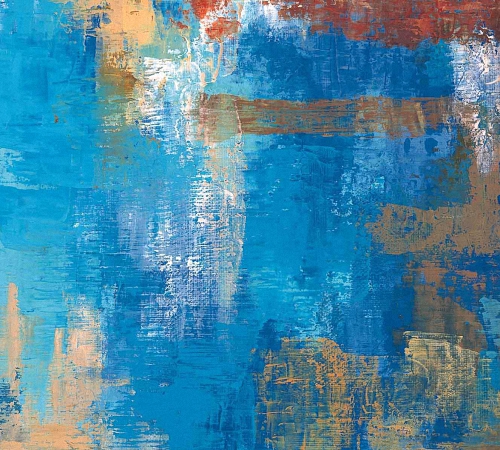
4. Moderate gloss satin paint is a great choice for kitchen, bathroom or washroom and is the most durable.
5. Matte paint hides the defects of the ceiling and walls well, copes well with excess lighting.
6. Glossy paint shines and enhances lighting when it is lacking. Sometimes, with a sponge dipped in this paint, the relief is painted over on a matte background - for a jacquard effect.
7. The easiest paint to apply is water-based, the most durable and versatile in use is acrylic. But you can not use any type of paint on wet wallpaper, they must dry for 2-3 days.
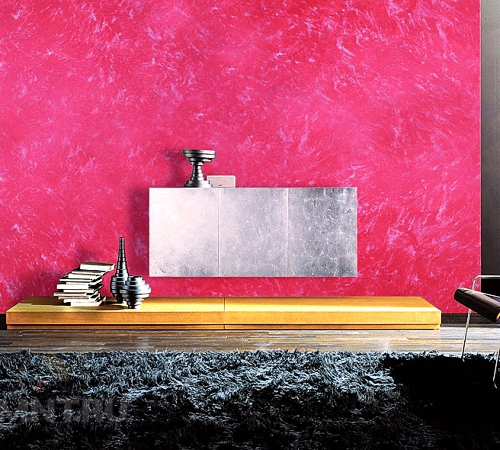
8. Before painting the wallpaper for painting, it is worth trying the color intensity on the control sample, if the shade is too pale, a pigment (color) is added. The concentration of pigment in each package must be the same, except for the special coloring "gradient".
9. First of all, the ceiling is painted, then the open walls, then the secondary ones, behind the furniture. All pieces of furniture must be taken out, the floor must be covered with newspapers, other open surfaces must be covered with film and masking tape.
10. A can of paint dries quickly, so it is not recommended to open it to see in advance. Immediately before application, the packaging is opened, diluted, poured into a special cuvette and painted with a paint roller.
11. Water-based paint has a white color, but the pigment is of any shade, but when diluted it looks lighter than after drying on the wall.
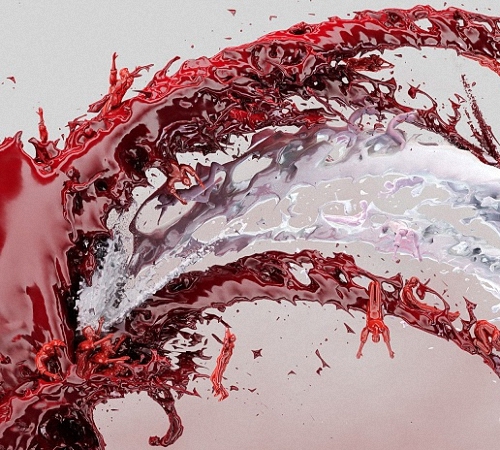
How to choose a roller and other tools for painting?
A paint roller is the most convenient tool for painting, since even a beginner can dip into a cuvette with finished paint and roll it on the surface of the walls with a roller. But there are different types of tool, for example:
- with a long pile;
- velor roller;
- with short hair.
- foam roller;
- fur roller.
Each of them gives its own effect when stained. A nozzle with a short pile is easy to roll only a relief pattern, and a long one will deeply color the entire texture. The foam surface gives uncolored bubbles if you lightly touch the walls without relief. Replaceable nozzles on the roller rinse well and check that the pile that can remain on the surface does not climb.
Paint brushes are used in hard-to-reach places where it is impossible to get perfect painting with a roller - corners, crevices, gaps, places behind pipes and radiators.
Paint is poured into a special cuvette so that the roller is wetted evenly and without excess. But it is better to stir the paint in a separate container, such as a plastic bucket, and then add it to a cuvette. Be sure to follow the proportion in the ratio of water and dye, for example, 10% by volume. Diluted paint is better absorbed by the roller and applied more evenly.
Tip: If you have difficulty choosing a tool, you don’t know which roller to paint wallpaper for painting, check with a consultant in a building materials store.
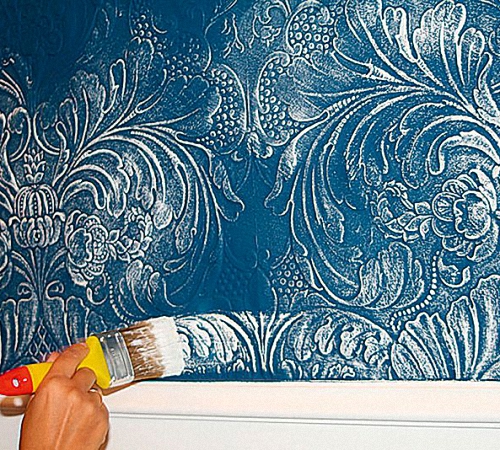
Features of painting non-woven wallpaper
Non-woven roll painting (wallpaper) is an excellent basis for painted ceilings and walls, so it does not cause difficulties with how to paint non-woven wallpaper for painting. The smooth underside is glued to the walls, and the top embossed is painted. This base imitates more expensive surfaces, looks great on the wall and without staining.
If you plan to clean painted wallpaper, experts recommend using only paint with a protective composition based on latex. Wallpaper is best painted over in 2 layers with a roller with a fur nozzle, and for difficult places use a brush. It is not recommended to drive the roller for a long time in one place and soak the wallpaper to excess.
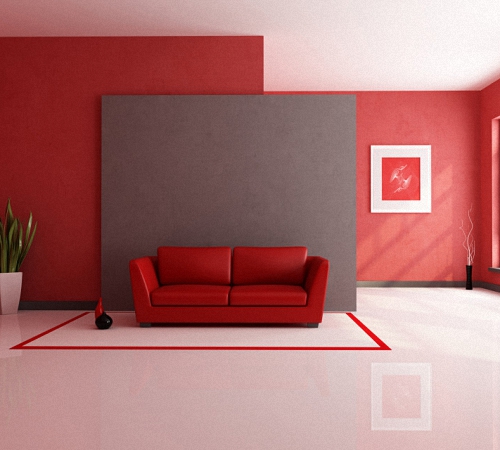
Features of painting paper wallpaper
Thick two-layer paper wallpaper with special impregnation is the cheapest base for painting, looks good on the ceiling. Due to the fact that paper is afraid of water, the question arises - how to paint wallpaper for painting? Any specialized paint is suitable, but it should not be impregnated to excess either - one uniform standing is enough.
The second layer is possible if the first is applied with streaks or bald spots. It is extremely undesirable to leave glue on paper wallpaper, which could show through between the seams of the panels - this reduces the quality of the work.
Features of painting glass
Glass fiber is the most durable layer for painting, as it consists of fiberglass based on quartz sand. Popular textures - "herringbone", "track", "cobweb", etc. Suitable for repeated repainting, the most resistant base that hides all defects. The paint is not absorbed, but it droops deeply between the fibers of the wallpaper. Glass fiber is the same glass wool that is unpleasant for the skin, so it is imperative to work in protective clothing.
Fiberglass suggest priming before painting, but be sure to read the instructions. Acrylic or latex paint is a great choice for this base. Usually applied in 2 layers, but the second is possible only after the first has dried.
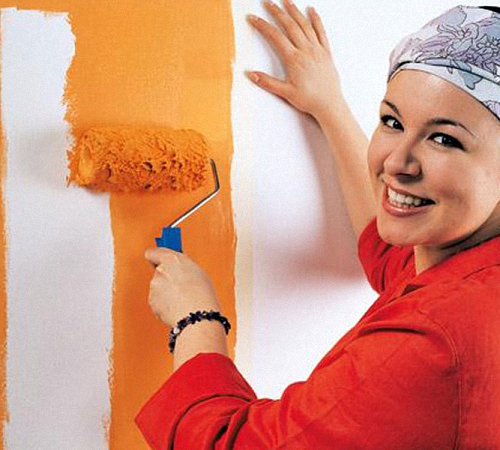
Features of painting vinyl wallpaper
Vinyl wallpapers on a paper or non-woven backing give a rich multi-layered texture. The choice of paint - strictly in accordance with the instructions.
Before painting, a primer and acrylic paint for wallpaper are supposed to be applied, which is applied with a long-haired roller and a paint brush. After a slight drying, a second layer is immediately applied, including a decorative one - for a relief surface. Use the minimum amount of paint.
See how to paint wallpaper for painting - video at the end of the article.
Most often, when painting wallpaper, the following questions arise:
- How to paint wallpaper for painting?
This factor depends on the type of wallpaper. So for paper wallpapers, water-dispersion paint is suitable, for non-woven and vinyl wallpapers - water emulsion, for glass wallpapers - acrylic paint and latex paint compositions.
- How to paint the wallpaper with water-based paint?
This is not an easy process. First, protect furniture and objects with a protective film to avoid contamination. In order not to damage the skin, you need to use gloves, goggles and closed clothing. Uneven walls must be leveled with a primer or putty (in this case, the paint will need to be applied in three layers). Mix the paint carefully. It is necessary to start painting from the window, from the light source. It is easier to paint from the corners with a brush, then with a roller. Stripes applied by roller should be vertical and stripes applied by brush should overlap each other (applied vertically and horizontally). The solution is washed off the walls with clean water.
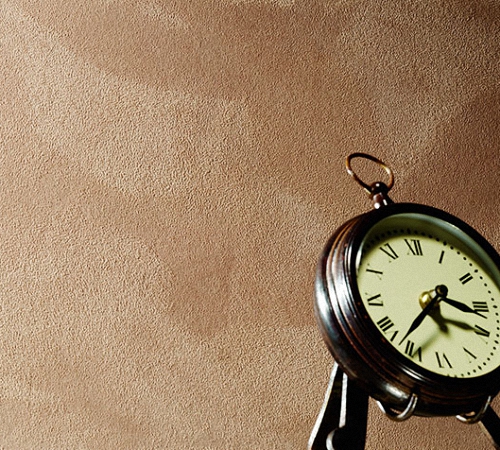
- Can wallpaper be applied to a painted wall?
If we are talking about wallpapering a painted wall, then, first of all, we need to talk about the risk. The consequence may be peeling off the wallpaper, the appearance of bubbles and bumps. But you can try. For the best effect, it is recommended to prime the walls. You can stick any wallpaper on the painted surface, except for vinyl. You can also try sanding the painted surface to make the wallpaper stick better.
- Can wallpaper be painted?
You can paint vinyl and non-woven wallpaper. It is not advisable to paint paper wallpapers.
- How to paint wallpaper on the ceiling?
If glass wallpapers are glued to the ceiling, then any paint will do, and only water-dispersion paint is suitable for non-woven wallpaper. It is also not recommended to paint the ceiling of residential premises with oil paint. Before painting the ceiling, it is necessary to de-energize the electrical wiring in order to avoid short circuits and accidents. Ensure that there are no drafts, lay floors and protect furniture. You need to use goggles, a hat and working tools: a roller, brushes, a ladder, a paint tray. The corners are painted with a brush, and the rest of the surface with a roller.
- How to paint wallpaper for painting a second time?
Wallpaper for painting can be repainted more than 5 times (up to 15, depending on the manufacturer and type of wallpaper). You can repaint in any color, regardless of the previous one. When repainting a darker color into a light one, you must first paint it with pure white paint, and then apply the desired color.
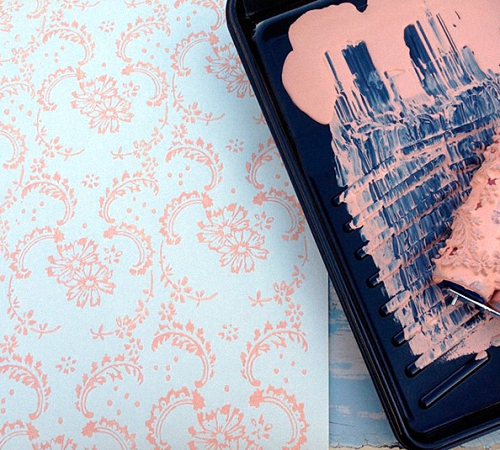
Painting features
All types of wallpaper for painting require compliance with certain rules and knowledge of secrets for the best results. At the same time, the composition of the surface is first taken into account, since it is better to paint glass wallpapers with latex, and non-woven bases are better with water-based paint. You always need to make a test: first on a separate piece of canvas, then on a section of the canvas that will be covered with furniture.
It should be noted that the paint is diluted only to create the first primer layer (add 10% of water from the total volume). However, this is not done for cullet, since it is better to paint cullet with two dense layers. At the same time, an interval of at least 12 hours is maintained. That is why they can be applied to the maximum number of layers compared to other materials.
In total, any type of wallpaper for painting can withstand 5-10 new layers. Then they may start to loosen from the wall, and in order not to wait for this, they should be removed if the surface needs to be painted again. Then the wallpaper is purchased again, and pasted on the walls according to standard rules. You can paint them only after complete drying, which lasts about 12 hours.
Final coating
After the base coat has dried, it's time for the realization of creative impulses. Patterns or drawings can be applied to the walls and ceiling. In addition, the surface can be coated with a colorless varnish. This is especially true in the nursery and bathroom, as well as in the kitchen. This coating is less prone to contamination. At the same time, it can be washed with a regular damp sponge.
The algorithm of work is the same as when painting with paint. The choice between glossy and matte varnish depends only on personal preferences. However, it is worth considering that even a matte varnish will add a slight sheen to the surface.
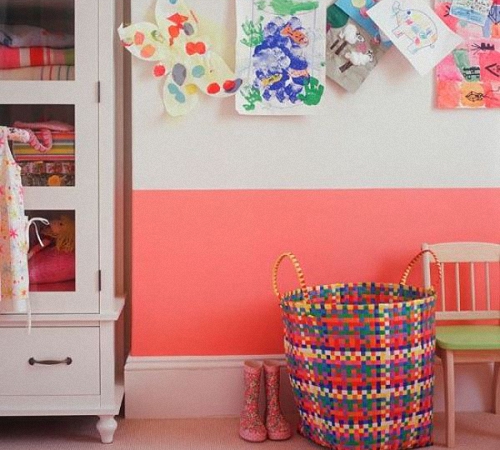
- Before starting work, remove all oversized objects from the room. Cover large furniture with cling film or old sheets.
- The floor should also be covered with film or newspapers.
- Cover with masking tape the areas of the walls that do not need to be painted (skirting boards, sockets, switches).
- Wet the roller with paint liberally and evenly. However, it should not drip.
- The ideal wallpaper color for painting is white or light shades.
- Use a spray gun for absolutely even painting.
- Non-woven wallpaper can be painted on both sides. The use of snow-white putty will emphasize the depth of color.
- Matte paint will help hide wall flaws and traces of old wallpaper.
- It is strictly forbidden to paint a surface that is not completely dry after wallpapering.
- The use of a brush and roller in the work wears out the base, reducing the number of possible repaints up to 6-8 times. To achieve 10-fold repainting without loss of quality, you need to use an airbrush.
- Do not leave wallpaper uncoated. The paint provides them with resistance to damage and durability.
![]()
Two sides of the coin
Although this method of updating the interior has earned a lot of compliments, any medal has two sides. Before making a decision, it is worth weighing all the pros and cons.
Arguments "for":
- They allow you to bring any idea to life. If a suitable color is not on sale, you can use the tinting service and create the desired one manually.
- The painted surface is easy to clean from dirt with a wet cleaning.
- Defects that have appeared (stains, children's drawings) can be easily eliminated with a brush. You do not have to re-paste a piece of wallpaper, or even a whole wall.
- Painting wallpaper is easier than re-pasting. Non-woven wallpaper can be repainted up to 10 times.
- It is easier to work with arches, corners and other non-standard shapes.
Arguments against:
- For a quality result, you need to prepare the walls.
- The ideal effect will be obtained only with the right choice of paint and tools.
- Most paints absorb dust.
- Paints protect from small mechanical damages. But a serious blow will cause visible damage to them.
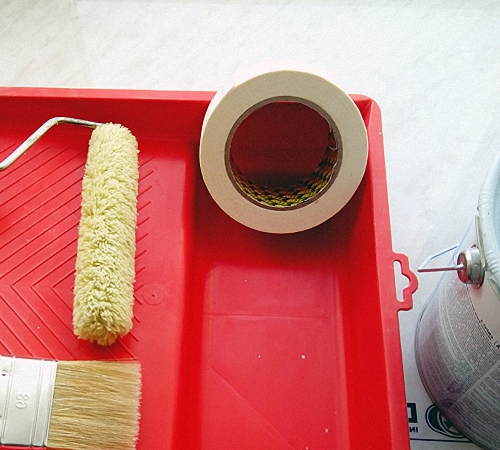
Original ideas for coloring wallpaper
Using wallpaper for painting gives you unlimited space for experimentation. You can use one of the following techniques:
- By applying horizontal or vertical stripes to the walls with paint, you can visually adjust the parameters of the room. To do this, draw the stripes with a regular pencil and ruler, and then paste over them with masking tape. Don't be afraid to step on him in the process! The borders of the stripes will still be smooth if they are allowed to dry completely.
- Before sticking the wallpaper, you can paint the surface of the walls in a bright color. Then you get a noble muted matte shade.
- Paint evenly embossed wallpaper, and then wipe the dry surface with a soft cloth. She will remove the paint from the protruding parts, thus emphasizing the pattern.
- New ideas for painting wallpaper can be emphasized from photos of finished interiors.
